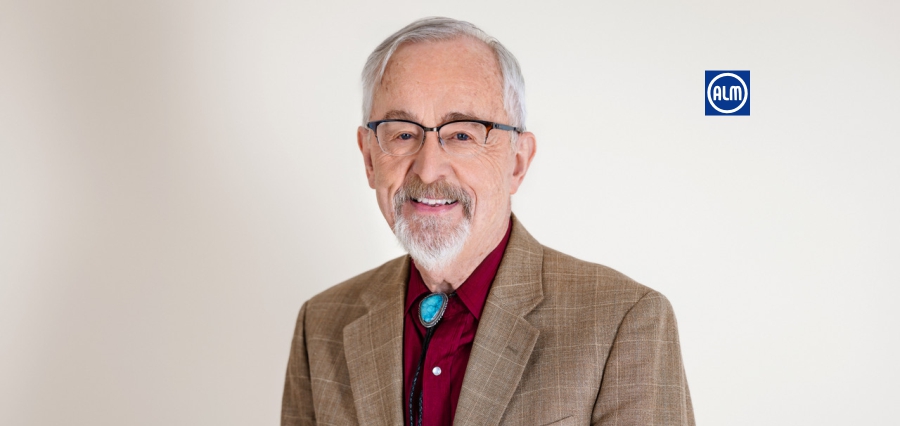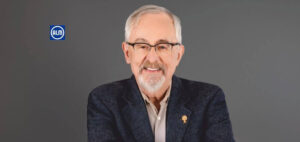Richard C. Larson, affectionately known in academic and professional circles as “Doctor Queue,” stands as a towering figure in the world of operations research and systems engineering. His journey from a curious student in Bayside, Queens, to a globally recognized scholar at the Massachusetts Institute of Technology (MIT) is marked by a deep and unwavering commitment to applying analytical rigor to real-world challenges. Over the decades, Larson has profoundly influenced the way cities manage emergency services, how students across the globe access quality education, and how we understand and improve the experience of waiting in queues.
At the core of Larson’s work is a seamless integration of technology, data, and human-centric design. From emergency response logistics to smart-energy homes, his research spans the intersection of people, systems, and services. His career has been a testament to the potential of applying operations research to public-good challenges—urban planning, disaster preparedness, and equitable access to knowledge. His leadership roles, accolades, and intellectual contributions are reflections of a professional life dedicated to innovation with purpose.
Now serving as Professor, Post-Tenure at MIT, Larson continues to shape academic and practical landscapes through his research, mentorship, and pioneering initiatives such as MIT BLOSSOMS. He not only contributed to scholarly literature with over 175 scientific publications and six books but also brought operations research into classrooms and communities across the globe. His is a legacy built on curiosity, clarity, and compassion—one that continues to influence disciplines and improve lives.
Early Foundations in Engineering
Richard Larson was born in 1943 in Bayside, Queens, New York City, into a household that encouraged learning and exploration. At age five, he moved to Sunbury, Pennsylvania, and later to North Plainfield, New Jersey, and eventually to Needham, Massachusetts, where he graduated from Needham High School. His academic aptitude soon led him to pursue higher education at the Massachusetts Institute of Technology, where he would go on to earn all three of his degrees—Bachelor of Science in 1965, Master of Science in 1967, and Ph.D. in 1969—all in electrical engineering. These formative years at MIT established a lifelong bond with the institution and set the stage for an extraordinary professional trajectory.
Larson’s early academic interests were rooted in quantitative analysis and systems thinking traits that became the bedrock of his contributions to operations research. While his initial specialization was electrical engineering, he quickly expanded his focus to the societal applications of mathematical modeling. It was at this point that he began to explore the complex problems of urban systems, emergency services, and public safety domains that were ripe for optimization through research.
His academic excellence and innate curiosity drove him to explore practical applications of theory. By the time he completed his Ph.D., he had already begun to make his mark as a thought leader, especially in the realm of urban emergency services. With his research, Larson demonstrated that the best technological minds could—and should—contribute directly to solving problems affecting everyday people.
Urban Systems and Emergency Response
One of Larson’s most defining research domains has been urban service systems, particularly emergency response. His work in this area began in the late 1960s under the guidance of the RAND Corporation, where he studied police dispatch systems in New York City. Through detailed models and simulations, he evaluated how cities could allocate limited resources, such as ambulances and patrol cars, more efficiently. These efforts resulted in numerous scholarly papers and eventually culminated in his award-winning book Urban Police Patrol Analysis, which earned the Frederick W. Lanchester Prize in 1972.
Larson’s approach was not just academic; it was deeply practical. His models helped city planners and public safety officials understand the trade-offs in response times, resource allocation, and operational costs. This early work in applied operations research laid the groundwork for future studies in disaster planning and pandemic response. By integrating data analytics with policy-making, Larson offered a roadmap for making urban environments safer, more responsive, and more efficient.
This research positioned him as an early authority on how cities could use science to save lives. His legacy in this area has inspired generations of engineers and policy-makers to consider the societal implications of their work, particularly in terms of equity, access, and optimization of public services. His insights continue to influence how cities design their emergency response systems today.
A Voice of Authority: Doctor Queue
Richard Larson became widely known in public and professional domains as “Doctor Queue,” a title that reflects his global stature in the field of queuing theory—the study of waiting lines. Larson not only developed the mathematical frameworks that explain queue behavior but also explored the psychology behind the experience of waiting. His insights revealed that perception often matters as much as duration: people are more tolerant of waits that feel fair or informative than those that feel disorganized or unjustified.
His expertise made him a sought-after commentator in media outlets such as National Public Radio and The Washington Post. Larson helped industries from telecommunications to retail optimize their customer service models. Whether the issue was reducing airport security lines, improving call center operations, or designing more humane wait times in hospitals, Larson’s work consistently translated into actionable, human-centered improvements.
More than just a theoretician, Larson elevated queuing theory from a mathematical curiosity to a cornerstone of customer experience and operational efficiency. His ability to combine psychological insight with engineering precision transformed how industries think about and manage waiting time—a topic that affects billions of people daily.
Technology-Enabled Education Visionary
In the mid-1990s, Richard Larson pivoted into a new arena that would become a hallmark of his later career: technology-enabled education. Appointed Director of MIT’s Center for Advanced Educational Services in 1995, he worked to democratize learning by leveraging digital technologies. His leadership helped launch the Singapore-MIT Alliance for Research and Technology and other initiatives that brought MIT-level education to students across the globe.
Larson’s belief in accessible education was rooted in personal experience. Witnessing the benefits of advanced learning tools in his children’s education sparked a lifelong commitment to expanding educational access. He co-founded the MIT BLOSSOMS (Blended Learning Open-Source Science or Math Studies) initiative, which produces and distributes high-quality video lessons in STEM subjects for high school students worldwide. The initiative has reached learners in dozens of countries, particularly in underserved regions.
As the Principal Investigator of MIT BLOSSOMS and the Founder of the Learning International Networks Coalition (LINC), Larson continues to advocate for education that transcends borders and socio-economic barriers. He envisions a world where quality learning is not the privilege of the few but the right of all. His work in this domain combines his strengths in systems design, educational strategy, and global outreach.
Leadership Across Academia and Industry
Throughout his illustrious career, Richard Larson has held influential positions in academic and professional organizations. He served as President of the Operations Research Society of America (ORSA) from 1993 to 1994 and again in 2005 after it merged into the Institute for Operations Research and the Management Sciences (INFORMS). In 2002, he was named a founding fellow of INFORMS—recognition of his standing as a luminary in the field.
His accolades are numerous and prestigious: the George E. Kimball Medal in 2002, the INFORMS President’s Award in 2003, and the Daniel Berg Lifetime Achievement Medal in 2017. He was elected to the National Academy of Engineering in 1993 for his contributions to operations research methodologies in service industries. These honors reflect a lifetime of leadership and innovation in both theory and practice.
Beyond academia, Larson has consulted for a range of government bodies and corporations, including the U.S. Postal Service and the City of New York. His advice helped these organizations improve efficiency, responsiveness, and service delivery, reaffirming the value of operations research in both the public and private sectors.
A Life Rooted in Purpose
At the heart of Richard Larson’s work lies a consistent mission: to use science, technology, and data to solve meaningful problems. Whether modeling emergency services, exploring the dynamics of waiting, or expanding access to STEM education, Larson approaches each challenge with intellectual rigor and human empathy. He is not only a scholar but a servant-leader—someone who believes that knowledge should empower, inform, and uplift society.
Larson’s personal life reflected this commitment to shared purpose. Alongside his late wife, Mary Elizabeth Murray, he delivered seminars around the world promoting the MIT BLOSSOMS initiative. Together, they believed in education as a global public good. Larson’s life journey, marked by scholarship, service, and a drive to improve systems for people, continues to inspire colleagues, students, and collaborators.
Today, as he continues to guide educational and engineering initiatives at MIT, Larson’s legacy grows stronger. He stands as a beacon of how science and society can come together to create meaningful change.



